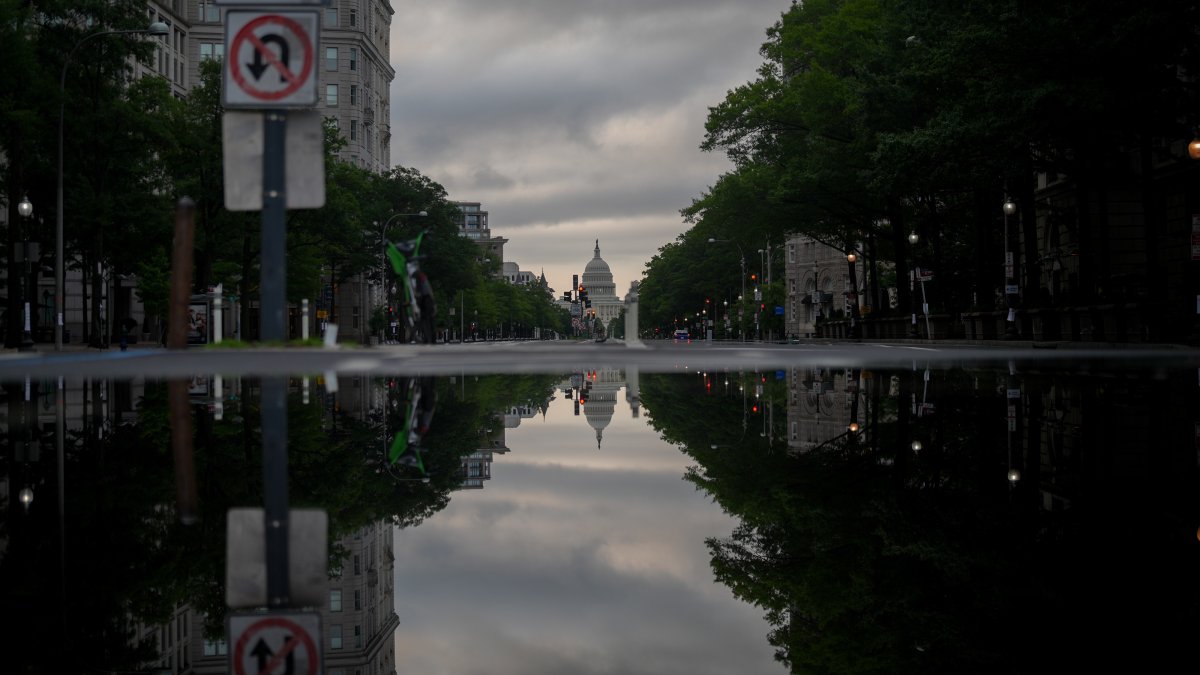What Happened
On June 14, 2025, Washington, D.C. is set to host a significant military parade to celebrate the 250th anniversary of the United States Army. This event coincides with President Donald Trump’s 79th birthday. The parade is scheduled to begin at 6:30 PM ET and will feature approximately 6,700 soldiers, tanks, and aircraft, including Black Hawk and Apache helicopters, marching down Constitution Avenue. The day will also include a festival starting at 11 AM, culminating in fireworks and a concert following the parade.
The parade has prompted extensive preparations, including road closures and security measures. Key routes affected include the Arlington Memorial Bridge and sections of I-395. Additionally, there are concerns about potential thunderstorms that could disrupt the festivities. Protests are also planned in conjunction with the parade, with activists voicing opposition to the event and its perceived implications.
Key Details
- Date and Time: The parade is scheduled for June 14, 2025, starting at 6:30 PM ET.
- Location: The parade will take place along Constitution Avenue NW, between 15th and 23rd streets, near the National Mall.
- Participants: Approximately 6,700 soldiers will participate, accompanied by tanks and military aircraft.
- Festival Activities: Festivities will begin at 11 AM, including a fitness competition and an official ceremony marking the Army’s birthday.
- Weather Concerns: The National Weather Service has forecasted possible thunderstorms that could coincide with the parade.
- Protests: Nationwide protests, branded as “No Kings,” are planned, with demonstrators expected to gather in Washington, D.C., and across all 50 states.
- Road Closures: Significant road closures will affect traffic in the area, with some routes closed for up to four days leading up to the event.
Multiple Perspectives
The military parade has garnered mixed reactions. Supporters, including President Trump, view it as a celebration of military strength and national pride. Trump has expressed enthusiasm for the event, stating, “I think it’s time for us to celebrate a little bit. You know, we’ve had a lot of victories.” The parade is also seen as a way to honor the Army’s long history.
Conversely, critics argue that the parade serves more as a personal celebration for Trump than a genuine tribute to the military. Eleanor Holmes Norton, the District of Columbia’s non-voting delegate in Congress, criticized the event as a “performative military parade” that wastes taxpayer money and disrupts daily life in the city. Concerns have also been raised regarding the potential impact of heavy military vehicles on local infrastructure.
Protests are expected to highlight these divisions, with activists asserting that the parade represents an authoritarian display of power. The juxtaposition of the parade and the protests underscores the polarized political climate in the United States.
Context & Background
The military parade is part of a broader tradition of commemorating significant anniversaries and events in U.S. history. However, the decision to hold such a parade has been contentious, especially given Trump’s previous attempts to organize similar events during his presidency. Critics have often linked these displays to authoritarian regimes, raising questions about the implications of military parades in a democratic society.
The timing of the parade, coinciding with Trump’s birthday, has led to further scrutiny. While Trump has denied any connection between the two events, many observers view it as an opportunity for the president to bolster his image and rally his base.
The logistical challenges posed by the parade, including road closures and security measures, reflect the complexities of hosting large-scale events in urban environments. The estimated cost of the parade, ranging from $25 million to $45 million, has also sparked debate over the allocation of military resources and taxpayer funds.
What We Don’t Know Yet
As the parade approaches, uncertainties remain regarding the weather and its potential impact on the event. The National Weather Service’s forecasts of thunderstorms could affect attendance and the overall experience of the parade. Additionally, the scale and nature of the protests are still unfolding, with the potential for significant demonstrations that could overshadow the parade itself.
The long-term implications of the parade on public sentiment and political discourse are also uncertain. The event may further entrench divisions within the country, particularly as it highlights contrasting views on patriotism, military displays, and the role of government in public celebrations.
In summary, the military parade in Washington, D.C. on June 14, 2025, is a multifaceted event that reflects both national pride and deep political divisions. As the day approaches, the interplay between celebration and protest will likely shape the narrative surrounding this significant occasion.


